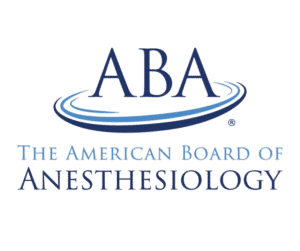Anyone who takes morphine long enough to become dependent on it faces the inevitability of morphine withdrawal once they decide to stop taking it. This is a set of physical and psychological symptoms people dependent on this drug experience as their bodies undergo the morphine detox process.
Morphine withdrawal symptoms are often very painful; for some, they may seem nearly impossible to overcome. However, this shouldn’t stop you from breaking the hold morphine dependence has over your life. The right treatment can help you overcome morphine withdrawal and addiction quickly and effectively.
What Is Morphine?
Morphine is a natural opioid—or opiate—commonly prescribed to relieve moderate to severe pain that cannot be treated with weaker painkillers, such as ibuprofen.
This medication is often used to manage labor pain, as well as pain resulting from injuries and surgeries. It can also be used to provide round-the-clock pain relief for patients suffering from chronic pain, such as that associated with cancer.
Morphine can be administered intravenously or orally and comes in the following forms:
- Immediate-release and extended-release tablets
- Extended-release capsules
- Solution
- Injection
Morphine is marketed both under its generic name and several brand names, including MS Contin®, MorphaBond®, Kadian®, and Oramorph®. It is also used to produce semi-synthetic opioids, including prescription painkillers (e.g., hydromorphone) and illicit drugs such as heroin.
Once taken, morphine attaches to opioid receptors in the central nervous system (CNS), disrupting the transmission of pain signals between the body and the brain. Besides pain relief, it can also induce euphoria and deep relaxation by triggering dopamine release.
Although it effectively alleviates pain, morphine has a very high potential for abuse, dependence, and opioid addiction. To minimize these risks, you should carefully follow your doctor’s instructions while taking this medication.
Morphine Withdrawal Symptoms
Experiencing morphine withdrawal symptoms after stopping or reducing morphine use signifies that you’ve become physically dependent on this medication.
Regular use of morphine leads to tolerance, which means your body becomes accustomed to the drug to the point where your usual dose loses effectiveness. This is another sign of morphine dependence. If you stop taking morphine after developing a dependence on it, you’ll inevitably experience morphine withdrawal symptoms.
Withdrawal symptoms from morphine can range from mild to potentially life-threatening, depending on the severity of your dependence and your health condition. Abruptly quitting morphine results in more severe withdrawal symptoms than tapering off the drug.
The worse your withdrawal symptoms are, the higher the risk of relapse, which is why quitting opioids “cold turkey” is the last thing you want to do.
Some common morphine withdrawal symptoms include:
- Anxiety
- Cravings
- Watery eyes
- Runny nose
- Nausea and vomiting
- Diarrhea
- Body aches
- Muscle and joint pain
- Headaches
- Sweating
- Chills
- Sleep disturbances
- Depression
- Irritability
- Elevated blood pressure
- Goosebumps
- Dilated pupils
- Yawning
- Fever
Morphine Withdrawal Timeline
The morphine withdrawal timeline is unique for each individual. It largely depends on your age, liver health, and the type of morphine you’ve been taking (short-acting or fast-acting), among other factors.
Here’s an overview of a typical morphine withdrawal timeline:
Day 1
Withdrawal symptoms from short-acting morphine set in within 6–14 hours after taking the last dose. Meanwhile, those from long-acting morphine usually begin within 12-24 hours after your last dose.
The most common early morphine withdrawal symptoms are:
- Flu-like symptoms (fever, runny nose, watery eyes, etc.)
- Cravings
- Anxiety
- Muscle aches
Days 2–4
Depending on what type of morphine you’re taking, you can expect your withdrawal symptoms to reach their peak severity within 2–4 days after quitting the drug. You may also experience nausea, diarrhea, and vomiting, which may put you at risk of severe dehydration.
Days 5–10
After reaching their peak, acute morphine withdrawal symptoms begin to improve. If you’ve been taking short-acting morphine, you can expect your withdrawal symptoms to dissipate within 7–10 days.
Days 10+
Although morphine withdrawal typically lasts about 10–14 days, withdrawal symptoms from long-acting morphine may persist for as long as 20 days.
However, regardless of the type of morphine you take, psychological withdrawal symptoms, such as depression and opioid cravings, may linger long after your physical symptoms have faded away.
Morphine Post-Acute Withdrawal Syndrome (PAWS)
Morphine post-acute withdrawal syndrome (PAWS) describes protracted morphine withdrawal symptoms that persist for weeks, months, and even years after quitting the drug. If you continue to suffer from withdrawal symptoms long after the acute withdrawal stage has passed, you’re likely experiencing PAWS.
Although post-acute symptoms can be physical, they are mostly psychological. Among other symptoms, PAWS can present as:
- Anxiety
- Depression
- Mood swings
- Attention deficit
- Insomnia
- Indifference
- Lethargy
- Eating disorders, bipolar disorder, and other mental health conditions
While the road to recovery can be long for people experiencing PAWS, it can be overcome with the help of medical professionals. Receiving treatment for PAWS is of utmost importance, as this condition may impact your daily life and put you at a greater risk of relapse.
How to Manage Morphine Withdrawal Symptoms
The best method to manage morphine withdrawal symptoms is to seek medical help. Your doctor may need to help you taper off morphine to reduce the severity and duration of these symptoms.
If you have underlying health problems, such as heart or liver disease, you should never attempt to detox from morphine by yourself due to an increased risk of complications. Morphine withdrawal can be potentially life-threatening even to those who are otherwise healthy, which is why anyone planning to quit morphine should first consult with a doctor.
Not to mention, morphine withdrawal symptoms can be very uncomfortable and painful. While home remedies may provide relief for some people, others may relapse in an attempt to alleviate their suffering.
Unfortunately, relapse after detoxing from morphine often leads to an opioid overdose and death due to reduced tolerance to opioids.
The number of overdose deaths related to natural and semi-synthetic opioids, including morphine, increased more than four times between 1999 and 2020. Needless to say, seeking medical help for morphine withdrawal and detox is critical to your well-being.
Risks and Dangers of Taking Morphine
By far, the greatest risk of taking morphine is developing a morphine addiction. While prolonged morphine use and abuse increase the risk of addiction, anyone taking this medication faces the risk of becoming addicted to it. This includes even those who take it precisely as prescribed by their doctor.
Some signs and symptoms of morphine addiction you shouldn’t ignore include:
- Experiencing cravings and withdrawal symptoms when not taking the drug
- Being unable to quit morphine
- Spending a lot of time obtaining, using, or recovering from morphine
- Neglecting work and family responsibilities
- Continuing to take morphine when it’s no longer needed
On top of that, morphine can cause various side effects, such as:
- Drowsiness
- Fatigue
- Dry mouth
- Urination problems
- Headaches
- Constipation
- Vomiting
- Nausea
- Confusion
- Breathing problems
You should never take morphine with other CNS depressants, including alcohol, due to an increased risk of potentially fatal adverse events such as overdose and respiratory depression. Inform your doctor about any medications, supplements, and even vitamins you’re taking to ensure they can be safely taken with morphine.
Also, avoid driving, operating heavy machinery, and other such activities while taking morphine, as it slows down brain function.
How to Detox From Morphine
For your safety, you should always detox from morphine in a medical setting.
Morphine detox centers offer various types of detox programs, ranging from inpatient detox, where you’ll be placed under 24/7 care for weeks, to accelerated morphine detox designed to flush the drug out of your body in just a few days.
Nonetheless, morphine detox isn’t a cure for addiction. It simply refers to the process of cleansing morphine out of your system. Since morphine detox fails to address the root of opioid dependence, these costly treatments come with a high risk of relapse.
Accelerated Neuro-Regulation (ANR) surpasses traditional morphine detox in terms of safety and effectiveness. As a comprehensive opioid addiction treatment, ANR restores normal brain function and eliminates the risk of relapse and morphine withdrawal symptoms.
Morphine Rapid Detox vs. ANR Treatment
Morphine rapid detox and the ANR treatment are entirely different in terms of their goals and effectiveness.
Rapid morphine detox is designed to cleanse morphine out of the system in just a couple of days. This quick morphine detox method involves the use of opioid antagonist drugs (naloxone or others) to trigger morphine withdrawal.
However, rapid detox doesn’t treat the chemical brain imbalance resulting from morphine use. Since it neglects the root cause of opioid dependency, morphine rapid detox often leads to more relapses than recoveries.
The ANR treatment, meanwhile, is designed to tackle morphine addiction at its root by repairing the damage opioids cause to the endorphin-receptor system. Because of this, it doesn’t lead to relapse or protracted morphine withdrawal symptoms.
The ANR treatment is also very safe, as it is always performed by board-certified medical professionals and tailored to each patient’s unique needs and medical history.
ANR Opioid Treatment for Morphine Addiction
Accelerated Neuro-Regulation is a revolutionary opioid dependency treatment that doesn’t simply counteract the symptoms of morphine dependency.
Currently, ANR is the only medical treatment that restores the endorphin-receptor balance in individuals with opioid use disorder.
Since the ANR treatment targets the physiologic mechanism behind dependency, attacking the issue at its core, it eliminates morphine dependency, cravings, and withdrawals!
With ANR, you can recover from morphine dependency in just a few days. The treatment is carried out in an ICU setting by qualified medical professionals and involves general anesthesia, induction of withdrawal, and modulation of your opioid and endorphin receptor systems.
Once it’s done, you can enjoy a full quality of life without the risk of further symptoms or relapse!
Depending on your location, you can receive the ANR treatment in:
- DeSoto Memorial Hospital, Arcadia, Florida
- Innovate Intelligent Place, Goiânia, Brazil
- ANR Europe Thun, Switzerland
- New Vision University Hospital, Tbilisi, Georgia
Contact us today to schedule a free consultation!
Key Takeaways
Seeking medical attention is the best thing you can do for yourself when you decide to quit morphine. This way, you can minimize both the intensity and the duration of morphine withdrawal, which increases your chances of making a lifelong recovery.
Let’s reiterate the key points we covered:
- Morphine is a natural opioid used to treat acute and chronic pain.
- The most common morphine withdrawal symptoms are muscle aches, runny nose, watery eyes, nausea, depression, and cravings.
- Withdrawal from long-acting morphine typically lasts longer than that from short-acting morphine, but most people overcome acute morphine withdrawal within more or less two weeks.
Morphine Withdrawal & Detox FAQ
Morphine can cause physical dependence, addiction, and withdrawal, especially if it is abused. Often, people who develop an addiction due to chronic morphine use turn to other opioids or illicit street drugs to satisfy their dependence if they cannot acquire it legally.
In most cases, you will begin to experience symptoms within 24 hours of your last dose of morphine. Withdrawal from short-acting morphine usually starts earlier than that from long-acting morphine. The most severe morphine withdrawal symptoms will likely occur within 2-4 days.
Most people overcome morphine withdrawal symptoms in one to two weeks. However, some experience post-acute withdrawal syndrome, which can last weeks, months, or even years. The duration of morphine withdrawal symptoms depends on individual factors, including the treatment you use. The recovery period lasts only a few days at an ANR treatment center.
You should never mix alcohol and morphine. In addition to potentially causing alcohol addiction and co-occurring drug withdrawal symptoms, simultaneous alcohol and morphine abuse can lead to an overdose, brain damage, liver failure/damage, respiratory depression, and in some cases, death.
Morphine can function as both a fast-acting and long-acting opioid, depending on the method of administration. For instance, morphine may be administered intravenously as a fast-acting opioid for the relief of acute pain. Alternatively, doses of morphine may be taken in the form of extended-release tablets for chronic pain treatment.
Common opioid withdrawal signs include dilated pupils, body aches, muscle cramps, and behavioral signs such as mood swings. Early opioid withdrawal symptoms often look similar to the flu and include fever, headache, chills, runny nose, and watery eyes.
ANR stands for Accelerated Neuro-Regulation, which is an extremely effective opioid addiction treatment that restores the endorphin-receptor balance to regular levels. It is a much faster and safer addiction treatment than other programs, such as inpatient rehab, intensive outpatient rehab, and even medication-assisted treatment using medicines like methadone or buprenorphine.







